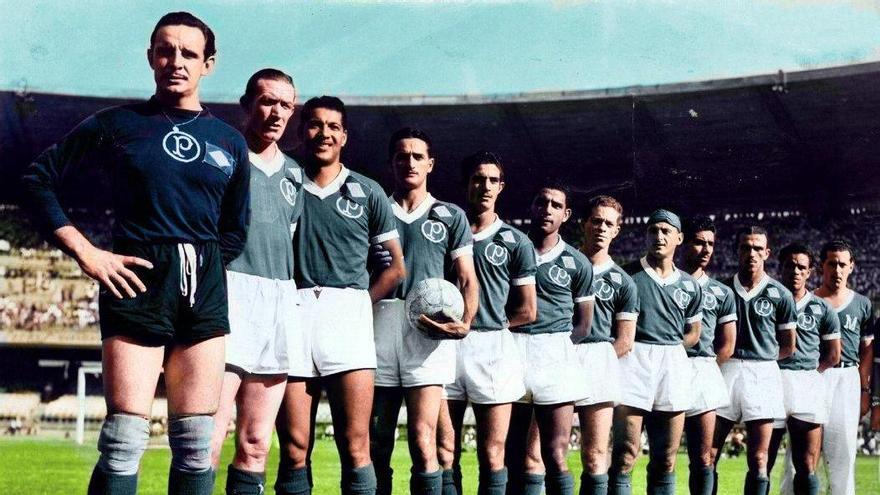In the populated Palmeiras animation tier that accompanies his team in the Club World Cup there is a banner that attracts attention: “Primeiros Campeões do Mundo Em 1951”. The message refers to the Rio 1951 Cup, the first international soccer club tournament that was organized in Brazil by the Brazilian Sports Confederation, predecessor of the CBF, and which had the approval of the FIFA. Eight teams from Europe and South America participated in that pioneer edition, considered champions or great representatives of their countries.
Atlético or Barça refused to go
The aspiration to crown the best club in the world, distinction that will grant the final on the 14th, comes from afar. The River Cup was the predecessor of the Intercontinental Cup, a tournament that has recovered FIFA this year and will be played annually, such as the old World Cup, while the New Club World Cup will be held every four years.
The participants of the tournament were Juventus, which would lose final against Palmeiras, Sporting de Lisbon in Portugal; the red star of Yugoslavia; and Austria Vienna on the European side. In South America the chosen ones were Palmeiras, the also Brazilian Basque da Gama and National of Uruguay. The payroll was completed by the Nice of France, which was considered as “rest of the world.” There were also negative to participate, such as those sent by Atlético de Madrid, FC Barcelona, Tottenham, Laussane, Milan or Newcastle.
The headquarters of the tournament were two: Maracaná, in Rio; and Pacaembu, in Sao Paulo. The structure, although with much less clubs it looked more like that of the tournament that is played in the US than to its predecessors. First there was a phase of two groups, from which two classifieds left to dispute the semifinals and a final that was played back and forth.
Palmeiras beat Juventus 1-0 in the first leg and in the lap he managed the advantage to achieve a 2-2 that would crown him as the first world of club champion. The tournament lasted from June 30 to July 22, 1951 and would open the way for the rest of the competitions that would come later. The triumph of Palmeiras was a reflection of the domain that Latin American teams had at that time.
Years of struggle for recognition
Precisely, the current Brazilian representatives, who have passed full to the eighths of the Club World Cup, want to collect the spirit of that appointment. Since the beginning of the 2000s, Palmeiras began claiming before FIFA that the 1951 River Cup title was recognized as the first World Club World Championship, due to its international character and the endorsement it had at the time by the governing agency of world football itself. In 2007, Joseph Blatter declared informally that “FIFA considers the 1951 world champion Palmeiras,” but did not issue any official notification in this regard.
In 2013, the Brazilian government, through the Ministry of Sports, and Palmeiras intensified the campaign, with the support of politicians such as Aldo Rebelo, then head of that portfolio. FIFA was formally sent, with files, documents and testimonies. But it was not until April 26, 2014 when FIFA officially recognized the Rio 1951 Cup as the first World Club Tournament. The decision was held in an official act in São Paulo. Palmeiras officially adopted the title on his shield, shirt and communications.
The great hero of that first conquest was Francisco Rodrigues was the great hero of Palmeiras, who scored two of the three goals in both games of the final. At first it was a preseason tournament, although this is still the nature of the Club World Cup, at least in its initial edition and from the European perspective. Upside. The new FIFA tournament will end up going on as that river cup, which no one wanted to look at the beginning and ended full in Maracaná. A story that Palmeiras is concerned with remembering every time he has occasion and that his fans proudly claim.
